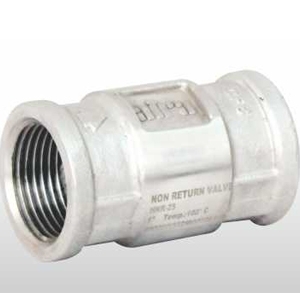Non Return Valve: Ensuring Efficient Flow Control
Posted by Aira Euro on July 13th, 2023
In fluid systems and pipelines, it is crucial to control the flow of liquids or gases efficiently. One essential component that aids in this process is the non return valve. This article will explore the concept of non return valves, their functionality, types, applications, benefits, installation, maintenance, troubleshooting, and more.
What is a Non Return Valve?
A non return valve, also called a check valve or a one-way valve, is a mechanical component used to let fluid or gas flow in one direction while preventing backflow in the other direction. It ensures the unidirectional flow of the medium, enhancing the efficiency and safety of the system.
How Does a Non Return Valve Work?
A non return valve operates on a simple principle: it opens to allow flow when the pressure on the inlet side exceeds the pressure on the outlet side, and it closes to prevent backflow when the pressure on the outlet side exceeds the pressure on the inlet side. This mechanism relies on the valve's internal design, which could include flaps, balls, discs, or diaphragms.
Types of Non Return Valves
-
Swing Check Valve: the swing check valve features a hinged disc that swings freely to allow forward flow. When the flow reverses, the disc swings back to its closed position, preventing backflow. It is commonly used in water and wastewater systems, as well as in industrial applications.
-
Lift Check Valve: The lift check valve utilizes a vertical disc that lifts off its seat to permit flow. As the flow direction changes, the disc settles back onto the seat, preventing backflow. This valve type is suitable for high-pressure systems and applications requiring low-pressure drops.
-
Ball Check Valve: The ball check valve employs a ball-shaped disc that rolls into an open position to allow flow and rolls back to a closed position to block backflow. It offers quick response, and minimal pressure loss, and is often used in applications with slurries or solids.
-
Diaphragm Check Valve: The diaphragm check valve uses a flexible diaphragm to control the flow direction. When the pressure on the inlet side exceeds the outlet side, the diaphragm lifts, enabling flow. Conversely, when the pressure reverses, the diaphragm seals the valve, preventing backflow. It finds applications in industries such as pharmaceuticals, food processing, and wastewater treatment.
Applications of Non Return Valves
Non return valves are widely used in various industries and applications, including:
-
Plumbing systems
-
Water treatment plants
-
HVAC (Heating, Ventilation, and Air Conditioning) systems
-
Oil and gas pipelines
-
Chemical processing plants
-
Power generation facilities
-
Marine and shipbuilding industries
Benefits of Using Non Return Valves
-
Prevents backflow and contamination of fluids or gases
-
Protects equipment and pipelines from damage caused by reverse flow
-
Reduces the risk of water hammer, which can lead to pipe bursts and system failures
-
Enhances system efficiency by maintaining optimal flow conditions
-
Minimizes energy losses by preventing wasteful backflow
-
Improves overall safety in fluid handling processes
Factors to Consider When Choosing a Non Return Valve
When selecting a non return valve for a specific application, several factors should be considered:
-
Flow rate and pressure requirements
-
Compatibility with the medium (fluid or gas) being handled
-
Material compatibility with the process fluid and environmental conditions
-
Installation orientation (vertical, horizontal, or inclined)
-
Maintenance and serviceability requirements
-
Compliance with relevant industry standards and regulations
Installation and Maintenance of Non Return Valves
Proper installation and regular maintenance are vital for the optimal performance and longevity of non return valves. Here are some key considerations:
-
Ensure correct positioning and alignment during installation
-
Verify the valve's orientation to facilitate a smooth flow
-
Periodically inspect and clean the valve to prevent debris buildup
-
Check for any signs of wear or damage and replace components as necessary
-
Follow the manufacturer's guidelines for lubrication and sealing, if applicable
Common Issues and Troubleshooting
Some common issues that may arise with non return valves include:
To troubleshoot these problems, it is recommended to:
-
Inspect and clean the valve and associated pipelines
-
Check for any damaged or worn-out parts and replace them if needed
-
Adjust the valve's spring tension or disc position, if possible
-
Consult the manufacturer or seek professional assistance for complex issues
Conclusion
Non return valves play a crucial role in ensuring efficient flow control and preventing backflow in fluid systems. By allowing unidirectional flow and protecting equipment from damage, these valves contribute to the overall safety, reliability, and performance of various industries. Proper selection, installation, and maintenance are essential to optimize their functionality and extend their service life.



